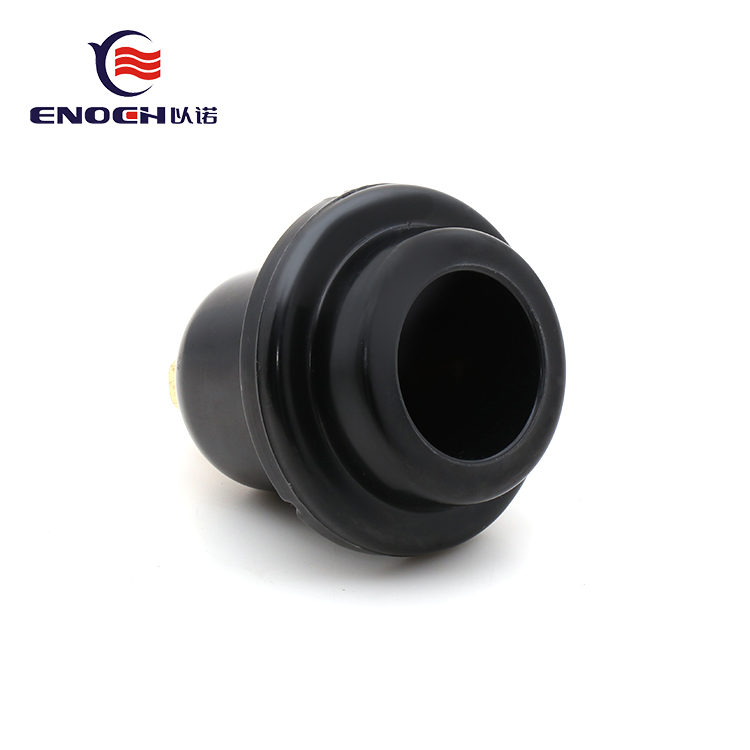The Anatomy of Durability: Materials and Properties of the High Voltage Bushing Well
2024-01-23
Introduction:
In the intricate landscape of high-voltage systems, the construction materials of components play a pivotal role in ensuring durability, reliability, and performance. The High Voltage Bushing Well, designed for the demanding realm of electrical infrastructure, undergoes meticulous construction using specific materials. In this blog, we embark on a journey to unravel the materials used in the construction of the High Voltage Bushing Well and explore their inherent properties that contribute to the well's robustness.
1. Porcelain Insulator:
The High Voltage Bushing Well often features a porcelain insulator. Porcelain is chosen for its excellent electrical insulating properties, high mechanical strength, and resistance to environmental factors. Its ability to withstand high-voltage stress makes it a reliable choice for insulation in high-voltage applications.
2. Silicone Rubber:
Silicone rubber is commonly used in the construction of the bushing well for its exceptional insulating properties and flexibility. It provides excellent resistance to moisture, chemicals, and temperature variations, ensuring the longevity and reliability of the well in diverse environmental conditions.
3. Epoxy Resin:
Epoxy resin is employed as a key material for encapsulating and insulating critical components within the High Voltage Bushing Well. This resin offers high dielectric strength, thermal stability, and resistance to chemical corrosion, providing an added layer of protection to sensitive elements.
4. Fiberglass Reinforcement:
Fiberglass reinforcement is often integrated into the construction to enhance the mechanical strength of the bushing well. Fiberglass, known for its lightweight and high tensile strength, reinforces structural integrity, making the well resilient to mechanical stresses and vibrations.
5. Copper Conductors:
Copper is the material of choice for the conductors within the High Voltage Bushing Well. Renowned for its high electrical conductivity, copper ensures efficient transmission of electrical currents. Its corrosion resistance and malleability contribute to the well's overall performance.
6. Aluminum Housing:
The housing of the bushing well may be constructed using aluminum, balancing durability with a lightweight design. Aluminum's corrosion resistance and thermal conductivity make it a suitable choice for providing structural support while maintaining effective heat dissipation.
7. Stainless Steel Fittings:
Stainless steel fittings are often incorporated for critical components like bolts and fasteners. Stainless steel's corrosion resistance, strength, and durability contribute to the overall robustness of the High Voltage Bushing Well, particularly in challenging environmental conditions.
8. Hig-Temperature Insulation Materials:
Given the potential for high temperatures in high-voltage applications, the bushing well may incorporate high-temperature insulation materials. These materials are chosen for their ability to maintain insulation integrity even under elevated temperatures, ensuring consistent performance.
9. Polymeric Insulation Coatings:
Polymeric insulation coatings may be applied to certain components of the bushing well to enhance insulation properties. These coatings provide an additional layer of protection against environmental factors, chemical exposure, and tracking.
10. Glass Fiber Reinforced Polymer (GFRP):
In some designs, Glass Fiber Reinforced Polymer may be utilized to reinforce specific components. GFRP combines the strength of glass fibers with the versatility of polymers, contributing to the well's resilience against mechanical stress.
11. Ceramic Coatings:
Ceramic coatings may be applied to surfaces exposed to harsh conditions to provide an extra layer of protection. Ceramic materials offer resistance to wear, abrasion, and chemical degradation, contributing to the overall longevity of the bushing well.
12. Polyurethane Encapsulation:
Polyurethane encapsulation is employed in certain designs to provide a protective layer for internal components. Polyurethane offers good electrical insulation properties and serves as a barrier against moisture, chemicals, and contaminants.
13. Resilient Elastomers:
Resilient elastomers, such as rubber compounds, may be used for specific sealing elements. These materials ensure effective sealing against environmental ingress, maintaining the integrity of the well's internal components.
14. Corrosion-Resistant Coatings:
Components exposed to corrosive environments may feature corrosion-resistant coatings. These coatings, often based on materials like zinc or other alloys, protect against corrosion, extending the lifespan of critical parts.
15. Composite Materials:
Composite materials, combining different elements for enhanced properties, may find applications in specific components. These materials are engineered to offer a balance of strength, insulation, and resistance to environmental factors.
Conclusion:
The High Voltage Bushing Well, constructed with a meticulous selection of materials, stands as a testament to the fusion of engineering precision and material science. Each material chosen contributes unique properties that collectively ensure the well's resilience in high-voltage environments. As we unveil the materials and their properties, we gain a deeper appreciation for the durability and reliability that define the High Voltage Bushing Well in the intricate tapestry of electrical infrastructure.



